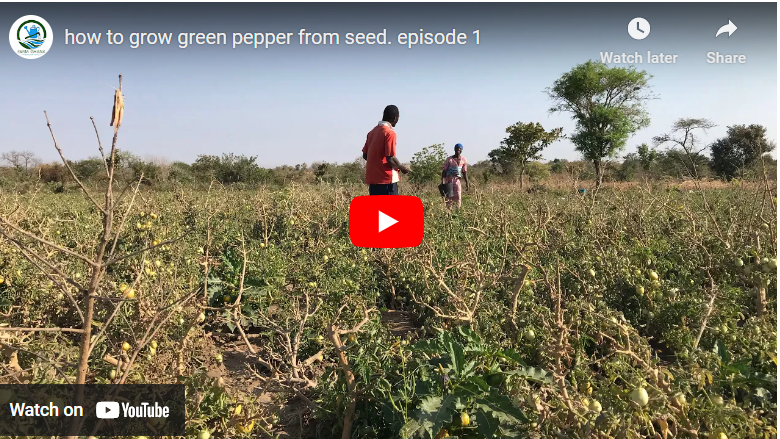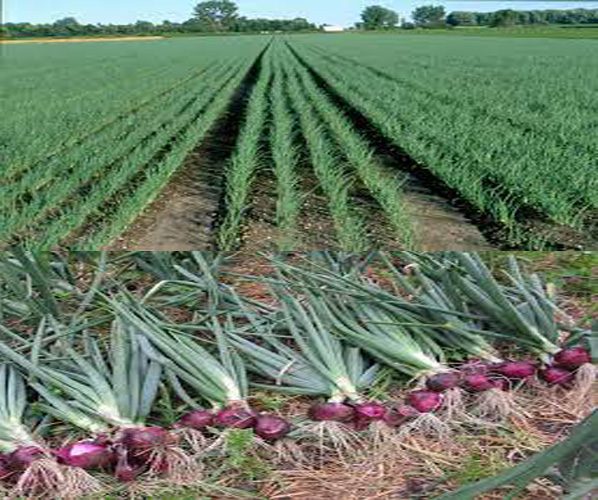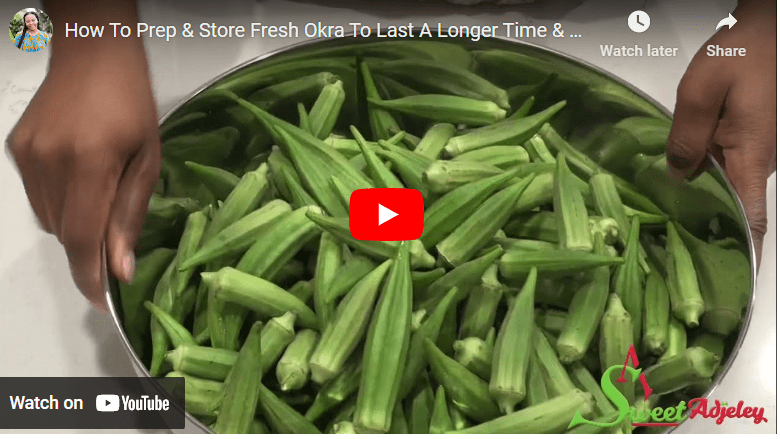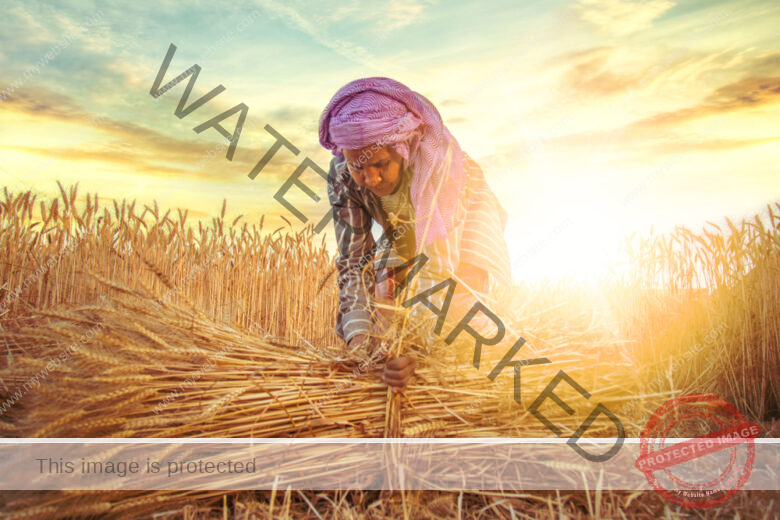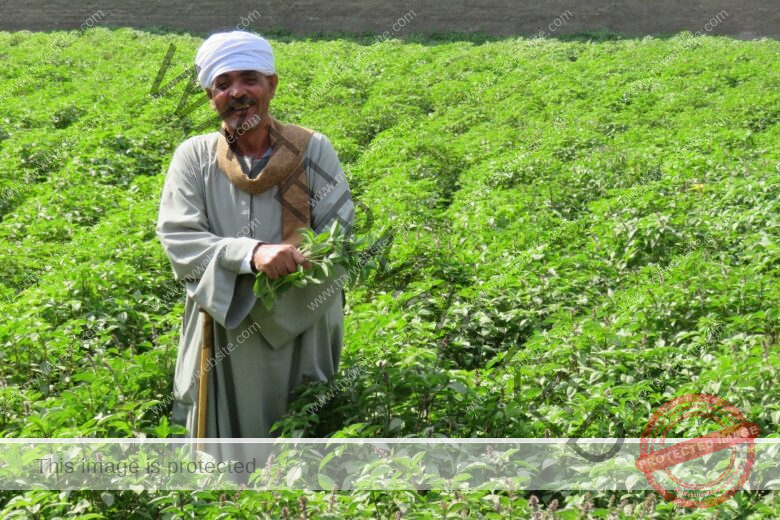Planting pepper in Zambia during the dry season can be a challenging but rewarding endeavor for farmers. The dry season is characterized by high temperatures and drought conditions, which can impact plant growth and yield.
However, by taking appropriate measures, such as using drought-resistant varieties, preparing the soil properly, and providing adequate water and shade, farmers can successfully grow peppers in the dry season.
The benefits of planting pepper during the dry season include increased yield, better quality, and higher market value.
In this article, we will explore the best practices for planting pepper in the dry season in Zambia, the challenges that farmers may face, the varieties of pepper that are suitable for this season, and common pests and diseases that may affect the crop.
How to Plant Pepper in Dry Season in Zambia
Planting pepper in dry season is meant for those that are patient and are ready to carry out the task involved. The steps have been outlined and discussed below to make the activities easy for you.
Read Also: [Beginners Guide] How to Plant Onions in Dry Season in Zambia
Step 1: Choose A Suitable Variety Of Pepper That Can Tolerate Drought Conditions
When selecting a pepper variety for planting in the dry season in Zambia, it’s essential to choose a variety that can tolerate hot and dry conditions.
Some of the best drought-resistant pepper varieties include cayenne, jalapeno, and habanero.
These varieties are well adapted to growing in hot and dry regions and can continue to produce peppers even when water is scarce.
Read Also: [Beginners Guide] How to Grow Pepper in Zambia
Step 2: Prepare the Soil
Before planting pepper, it’s essential to prepare the soil. Start by loosening the soil using a garden fork or hoe to break up any compacted soil.
This process will help the soil retain water and allow the pepper roots to grow more easily. Remove any weeds or debris from the soil to prevent competition for nutrients and water.
If the soil is dry, add some organic matter like compost or manure to improve its moisture-holding capacity.
Read Also: [Beginners Guide] How to Grow Spinach in Zambia
Adding organic matter to the soil will help to retain water and provide essential nutrients to the pepper plants.
Mix the organic matter into the soil, so it’s evenly distributed throughout the planting area.
Step 3: Dig Planting Holes
Once the soil is prepared, it’s time to dig planting holes. The holes should be about 30 cm apart and 5-10 cm deep, depending on the size of the pepper seedlings.
Make sure the planting holes are deep enough to cover the roots of the pepper seedlings.
Read Also: [Beginners Guide] How to Grow Vanilla in Zambia
Step 4: Water the Planting Holes
Before planting the pepper seedlings, water the planting holes thoroughly. This will help to settle the soil and reduce transplant shock. Allow the water to soak into the soil before planting the seedlings.
Step 5: Transplant the Seedlings
Carefully transplant the pepper seedlings into the planting holes. Make sure to cover the roots with soil and press the soil firmly around the base of the seedlings to ensure they are secure.
Read Also: [Beginners Guide] How To Grow Cocoa In Zambia
Step 6: Water the Pepper Plants
Water the pepper plants immediately after planting and continue to water them regularly, especially during the dry season.
To promote deep root development, soak deeply and sparingly as opposed to often and shallowly. Watering deeply will help the plants develop strong roots that can access moisture deep within the soil.
Read Also: [Beginners Guide] How to Grow Coconut in Zambia
Step 7: Mulch Around the Base of the Pepper Plants
Mulch around the base of the pepper plants with organic matter like straw or leaves to help retain soil moisture and suppress weed growth.
The mulch will also help to regulate soil temperature, preventing the soil from getting too hot during the day.
Step 8: Provide Shade For The Young Pepper Plants
Provide some shade for the young pepper plants by placing a shade cloth over them or planting them in a partially shaded area.
Read Also: [Beginners Guide] How To Grow Okra In Zambia
This will help to reduce water loss through transpiration. Excessive exposure to direct sunlight can cause the pepper plants to lose too much water through transpiration, leading to wilting and stunted growth.
Step 9: Protect the Pepper Plants From Pests And Diseases
Regularly inspect the pepper plants and take appropriate measures to control any infestations or infections.
Pests like aphids and whiteflies can quickly damage pepper plants, and diseases like bacterial leaf spot can quickly spread throughout the plants, leading to a reduced yield.
Use organic pest control methods like neem oil or insecticidal soap to control pests, and avoid overwatering the plants to prevent disease.
Read Also: [Beginners Guide] How to Grow Pineapple in Zambia
Step 10: Harvest the Peppers
Harvest the peppers when they are mature and ready for consumption. This will encourage the plants to continue producing new peppers throughout the growing season.
Make sure to pick the peppers regularly to prevent overripe fruit from sapping the plant’s energy. Storing ripe peppers in a cool and dry place will keep them fresh for longer.
Benefits of Planting Pepper in Dry Season in Zambia
#1. Increased Yield
Planting pepper in the dry season can result in a higher yield, as the plants have access to more sunlight and fewer disease and pest issues.
#2. Better Quality
Peppers grown in the dry season tend to have a better quality, as they are less susceptible to rot and other diseases caused by excess moisture.
Read Also: [Beginners Guide] How to Grow Vegetables in Zambia
#3. Higher Market Value
Peppers grown in the dry season are often in higher demand and can command a higher price in the market.
#4. Improved Income
The increased yield and higher market value can result in improved income for farmers.
#5. Diversification
Planting pepper in the dry season can help farmers diversify their crop production, reducing their reliance on a single crop.
Read Also: How To Grow Groundnut in Zambia [Beginners Guide]
Best Practices of Planting Pepper in Dry Season in Zambia
- Use drought-resistant varieties of pepper.
- Prepare the soil by adding organic matter and loosening it to retain water.
- Dig planting holes and water them thoroughly before transplanting.
- Water the pepper plants deeply and infrequently, rather than frequently and shallowly.
- Provide shade for the young pepper plants to reduce water loss through transpiration.
- Use organic pest control methods to control pests and diseases.
Read Also: How To Grow Irish Potatoes In Zambia PDF
Challenges of Planting Pepper in Dry Season in Zambia
#1. Drought
The most significant challenge of planting pepper in the dry season is the lack of water. Drought conditions can severely impact plant growth and yield.
#2. High temperatures
Zambia’s dry season is characterized by high temperatures, which can cause stress to the pepper plants.
#3. Pest and disease pressure
Although there are generally fewer disease and pest issues during the dry season, there is still a risk of infestation and infection.
Read Also: [Beginners Guide] How To Grow Onions In Zambia
#4. Soil quality
In some areas of Zambia, the soil can be poor in quality, making it difficult to grow healthy pepper plants.
Varieties of Pepper Plant Dry Season in Zambia
- Cayenne pepper
- Jalapeno pepper
- Habanero pepper
- Bird’s eye chili pepper
- Thai chili pepper
- Anaheim pepper
Cost of Planting Pepper in Dry Season in Zambia
The cost of planting pepper in the dry season in Zambia varies depending on various factors such as the size of the farm, the cost of inputs, and labor.
Some of the costs include purchasing seedlings or seeds, preparing the soil, irrigation equipment, pest and disease control, and labor.
How much is Pepper sold in Zambia
The price of pepper in Zambia varies depending on various factors such as the season, demand, and supply. The average price of pepper is around ZMW 5 to 8 per kilogram.
However, during the dry season when pepper is scarce, the price can increase to as much as ZMW 15 per kilogram.
Best Time to Plant Pepper in Zambia
The best time to plant pepper in Zambia is during the rainy season, which typically lasts from November to March.
However, planting pepper in the dry season can be successful if appropriate measures are taken to ensure the plants have access to water and protection from high temperatures and pests and diseases.
Common Pest and Diseases of Planting Pepper in Dry Season in Zambia:
- Aphids
- Whiteflies
- Thrips
- Bacterial leaf spot
- Fusarium wilt
- Powdery mildew
Pepper Production Manual PDF
A pepper production manual is a useful resource for farmers who want to learn about the best practices for growing and harvesting peppers.
It typically includes information on soil preparation, planting, fertilization, pest and disease control, harvesting, and post-harvest handling.
The manual can also provide insights on pepper varieties suitable for different regions and growing conditions. A pepper production manual can be obtained online in PDF format, making it easily accessible to farmers.
Dry Pepper Season in Zambia
The dry season in Zambia is a suitable time to grow peppers, as they thrive in hot and dry weather conditions. During this period, farmers can take advantage of the absence of rainfall to control irrigation and prevent waterlogging, which can lead to plant disease.
However, farmers need to provide adequate irrigation and mulching to maintain soil moisture and prevent wilting.
Proper weed and pest control measures must also be in place to ensure healthy plant growth and high pepper yields.
Green Pepper Farming PDF
Green pepper farming involves growing peppers that are harvested when they are still green and unripe. This type of pepper is usually preferred for its mild flavor and crunchy texture.
A green pepper farming PDF can provide farmers with guidance on the best practices for cultivating green peppers.
The manual can cover topics such as seed selection, planting, fertilization, pest and disease control, and harvesting. With the help of a green pepper farming PDF, farmers can increase their yields and improve the quality of their green peppers.
Green Pepper Yield per Hectare
The green pepper yield per hectare depends on various factors such as soil fertility, irrigation, pest and disease control, and weather conditions.
On average, farmers can expect a green pepper yield of 10-20 tons per hectare, although this may vary depending on the variety of pepper and the farming practices employed.
Proper soil preparation, fertilization, and irrigation can help increase the yield of green peppers per hectare.
Also, effective pest and disease control measures can help prevent crop losses and boost the yield of green peppers.Top of Form
Conclusion
Planting pepper in the dry season in Zambia requires careful planning and attention to specific details such as soil preparation, seed selection, watering techniques, and pest control measures. Farmers need to utilize available resources effectively to optimize yield and minimize losses. By following these essential steps, pepper farmers can successfully cultivate their crops in the dry season and enjoy good profits.
